In February 2020, I took a road trip across the country, visiting farms of all types and sizes. I realized I didn’t have some of my writing from my old blog on my new site, so I wanted to share some of the spotlights I wrote about the farms I visited. I learned so much from every farmer I met, but I included 3 of the stops from the first leg of the trip.
Polyface Farm – Swoope, VA
Polyface Farms, featured in Michael Pollan’s book Omnivore’s Dilemma, is among the best-known alternative farms in the country. The farm, which covers 550 acres in the scenic Shenandoah Valley, was founded in 1961 by Joel Salatin, the eccentric farmer, and public speaker considered by many to be the pioneer of chemical-free farming.
Joel, a self-described "Christian libertarian environmentalist capitalist lunatic farmer,” produces meat he calls “beyond organic,” referring to the methods he uses on his farm.
Though he raises animals for meat and eggs, Salatin sees himself as a “grass farmer,” since grass is the vital source of the nutrients his animals consume.
Polyface is mostly quiet in the winter, as the farm only raises animals that can eat grass outside. But we were able to stop by the general store and take advantage of the farm’s open-door policy to walk around and meet the pigs and egg-laying chickens.
Read more about Joel and the many books he’s written, along with his musings. For important context about his work that emerged after the visit, read here.
White Oak Pastures – Bluffton, GA
White Oak Pastures had a significant impact on me. Its slogan - Radically Traditional Farming - captures best what they are all about. Located in Bluffton, Georgia, White Oak Pastures is focused on raising grass-fed beef and using land management practices that work to regenerate rather than destroy land, a well-known negative consequence of commodity cattle-raising operations. Spending time at White Oak felt like stepping into a close-knit community. We stayed at one of the cabins on the property, which kept us connected to our surroundings. There was no cell service or WIFI.
White Oak’s general store and restaurant are the hub of the Bluffton community and a welcome source of employment. We took a tour with Jodi, one of the founding family members, who walked us through the farm’s leather workshop, egg processing operation, online order warehouse and the red meat abattoirs (a French word commonly used in place of slaughterhouse). This was an unusual tour as most of the slaughterhouses in this country are industrial operations that do not allow visitors to observe.
For context, it is important to note that 80% of the beef in the United States is processed by four large companies (Tysons, JBS, National Beef and Cargill). This means that small-scale processors like White Oak are rare due to increased regulation and bureaucracy that favor industrial-scale operations.
White Oak, on the other hand, wants consumers to see how they care for their animals and how, by processing (from cow into meat) at a reasonable scale, they create no excess waste. The family strives to use every single part of the animal, such as candles, leather bags, rugs, and pet toys. I had mixed feelings about observing a slaughter operation, but I firmly believe that if you are going to eat meat, being able to watch the sacrifice is key to making a connection with food. In terms of size, their facility processes 30-35 cattle a day, while an industrial facility processes 400 an hour. This is the difference between a sustainable operation and one that raises animals only to maximize output.
As Jodi reminded us before we left, consumers always have the power to vote with their dollar, but the greenwashing that big companies promote threatens businesses like theirs. Bigger companies can now create labels and marketing that give the impression that animals are being raised humanely and on pasture when they are not. The best way to know what you’re getting is to get to know the people and company that produce the product - and become life-long customers.
Northside Planting – Franklin, LA
Finding this farm was a bit of a miracle. After reading an article from 2003 about sugarcane growers in Louisiana recognized for re-building soil health, I reached one of the sons in the family, who kindly invited me to come for a visit.
Upon our arrival, two brothers, Chad and Clint, who own the farm, greeted us warmly. We sat down in their office to understand the complicated business of growing sugarcane on a family farm and selling it into a complex marketplace.
We discussed sugar import bans and the necessity of government protection to prevent putting all sugarcane growers out of business. They explained that the health consequences of when food manufacturers use subsidized high-fructose corn syrup as a sugar substitute - Cane sugar is broken down into fructose, which our bodies burn as energy, while high fructose corn syrup is stored in our bodies as fat. Chad explained how their grandfather formed a friendship with a Mennonite community that taught them how to pay attention to their soil, reducing their reliance on fertilizers. The brothers also highlighted the same problem that many farmers I spoke with faced – falling prices. Like other producers, they now have to farm more acres in order to make the same money.
Toward the end of our visit, we toured their collection of farm equipment, much of which they have customized themselves. They also sent us off with a 10-lb bucket of raw sugar—the good stuff before it gets bleached!
Gems of the Week ✨
I made my first frosting from beans! I will test it a few more times before I share any recipes, but I got this lovely purple color seen above by using some red beet powder and blue spirulina. I asked on Instagram what color should be called and got Periwinkle, Foggy Afternoon Darjeeling, Shark Shimmer, and Smoke Show.
Gastropod - Queen of Kiwi - I’ll probably end up writing more about this episode because it was so good, but it covered Frieda Caplan, a woman who worked in the produce industry and introduced many of the global fruits we eat today to the American market.
- writing on Martha Stewart was absolutely a gem of my week.
I’m taking a class with the incredible cake artist Bess of Sweet Haze next week. It looks like there are still spots for next Saturday. If you are interested, you can find out on her Instagram.
As for the election, I am still processing what we learned about this country that night, but one voice has been helpful this week. Please check out
’s work, especially her piece on the generational struggle for trans rights.
Flexible Lentil Soup ✨
As I shared a couple of weeks back in Pulse Party, lentils deserve their own spotlight from our BFF beans.
Because green lentils have a nice texture and don’t get mushy, I prefer not to blend them in soups. I like to use this simple recipe as a base and experiment from there.
This week, to the base recipe, I added marinated artichokes, chopped kale, and some random square pasta I needed to use up.





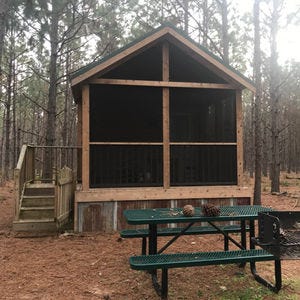
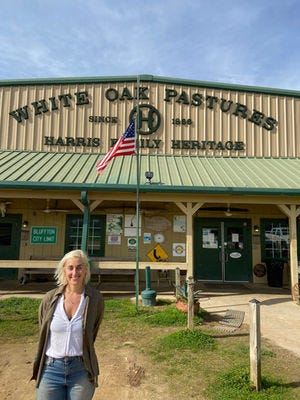

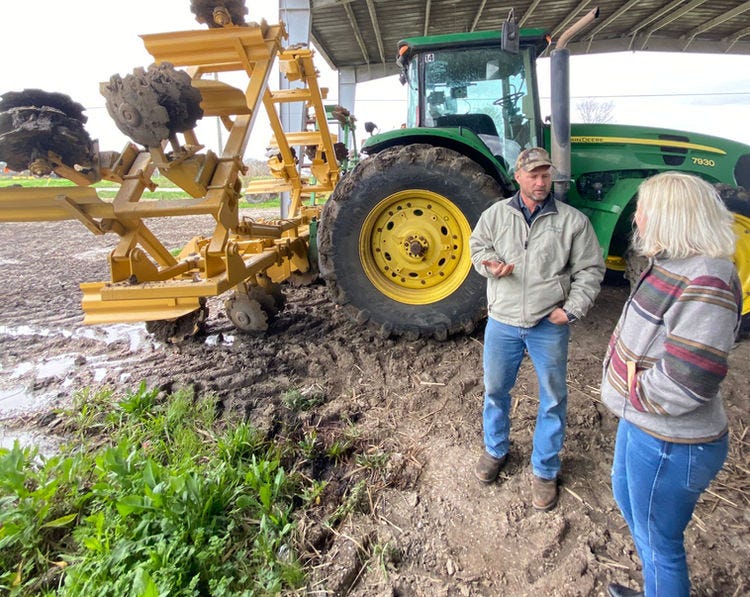
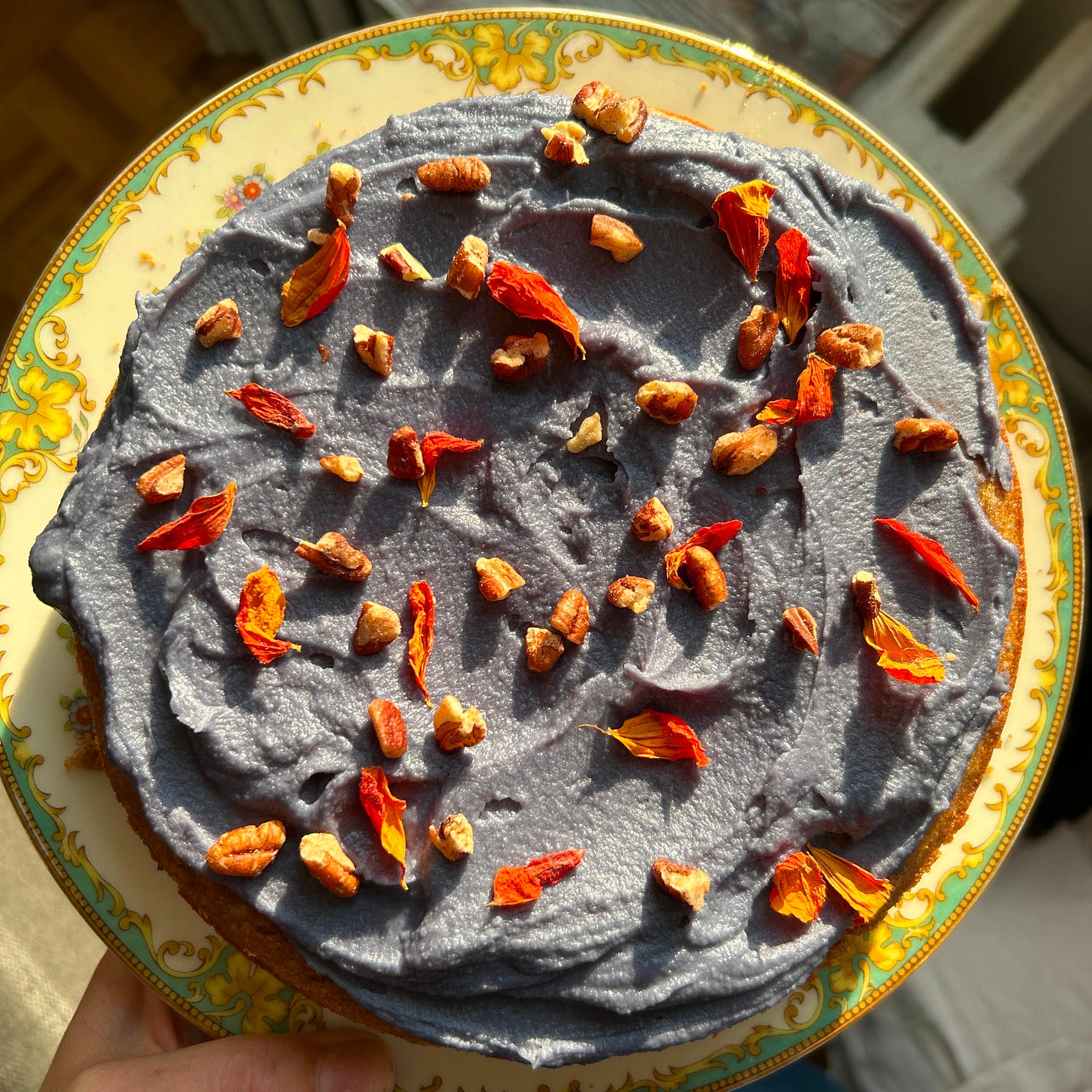
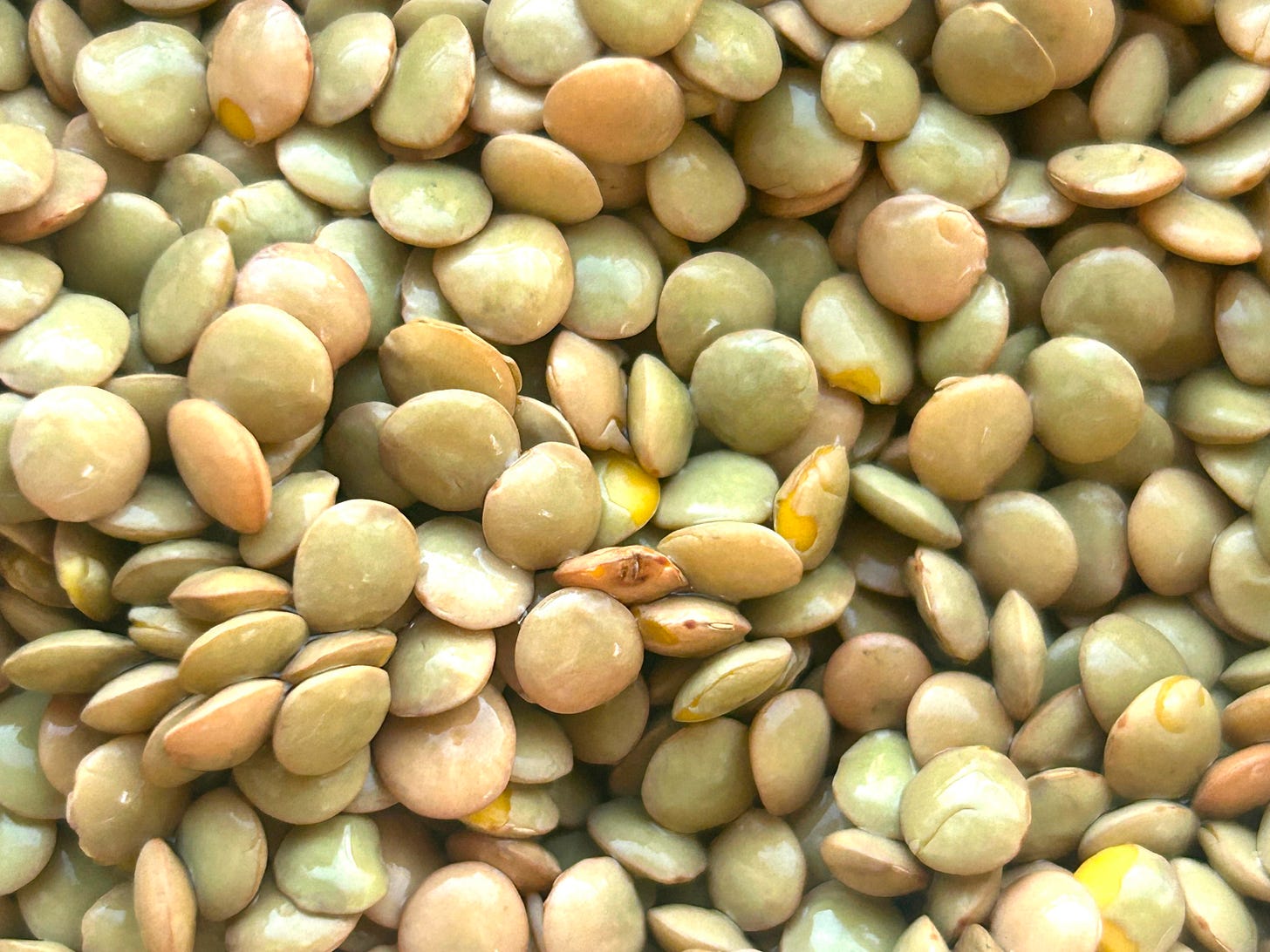
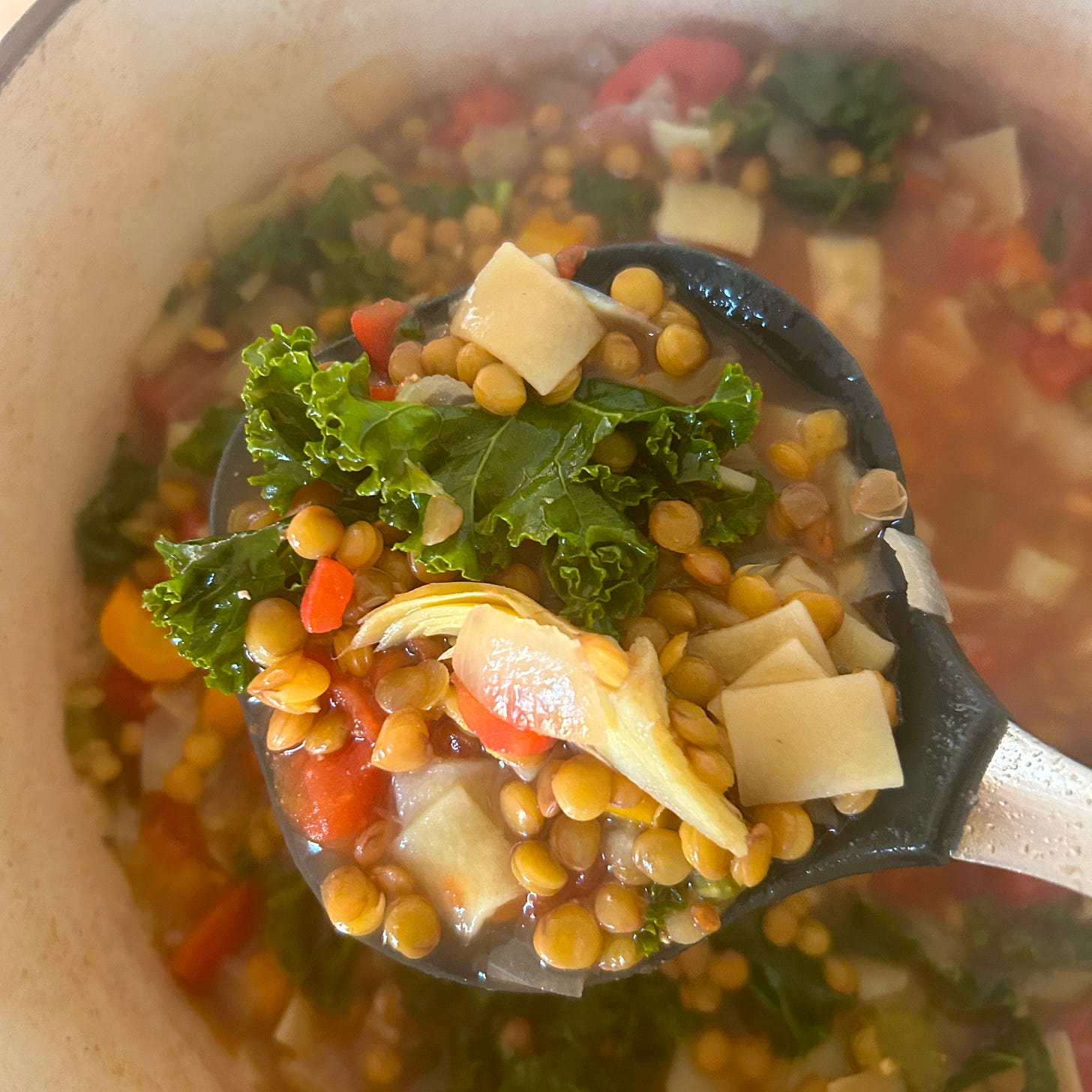
Have you read A Bold Return to Giving a Damn: One Farm, Six Generations, and the Future of Food by Will Harris? It's been on my TRB for some time and I love that you visited the farm!